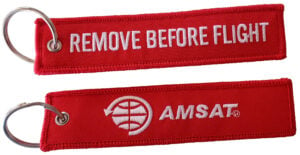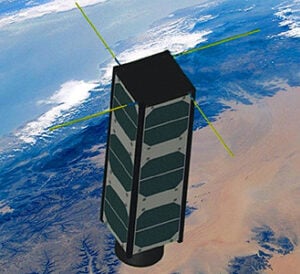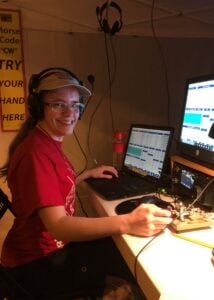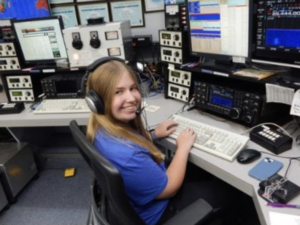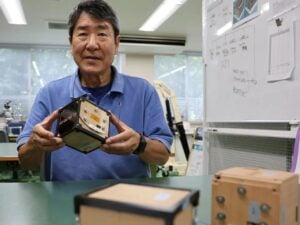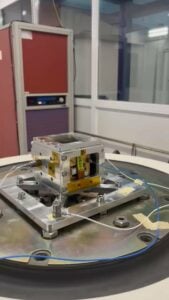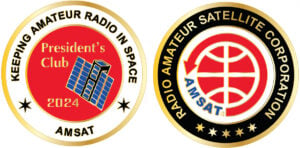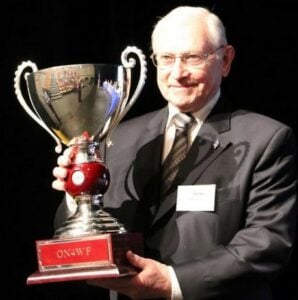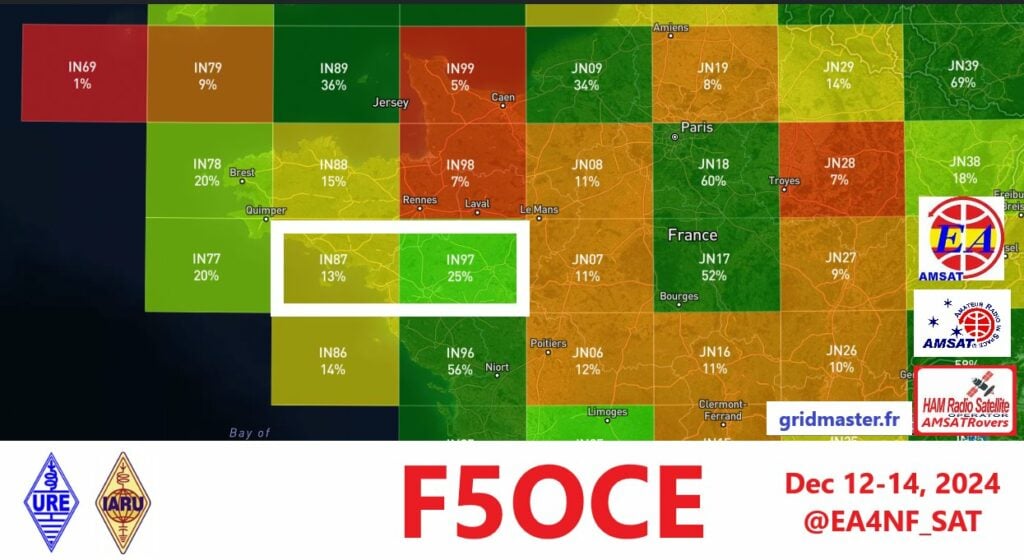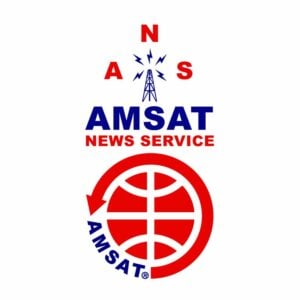
AMSAT News Service
ANS-047
February 16, 2025
In this edition:
- HB9RG Trophy Competition – March 3 – 16, 2025
- Current Active AMSAT Engineering Projects
- Changes to AMSAT TLE Distribution for February 14, 2025
- ARISS News
- Upcoming Satellite Operations
- AMSAT Ambassador Activities
- Satellite Shorts From All Over
The AMSAT News Service bulletins are a free, weekly news and information service of AMSAT, The Radio Amateur Satellite Corporation. ANS publishes news related to Amateur Radio in Space including reports on the activities of a worldwide group of Amateur Radio operators who share an active interest in designing, building, launching and communicating through analog and digital Amateur Radio satellites.
The news feed on https://www.amsat.org publishes news of Amateur Radio in Space as soon as our volunteers can post it.
Please send any amateur satellite news or reports to: ans-editor [at] amsat.org
You can sign up for free e-mail delivery of the AMSAT News Service Bulletins via the ANS List; to join this list see: https://mailman.amsat.org/postorius/lists/ans.amsat.org/
HB9RG Trophy Competition – March 3 – 16, 2025
The first QSO via amateur satellite took place on March 10, 1965 when HB9RG and DL6EZA successfully completed a QSO via OSCAR III. In celebration of the 60th anniversary of this historic accomplishment, AMSAT-HB is holding a two week long competition.
The goal is to complete DX QSOs via LEO, MEO, or HEO satellites (GEO satellites are not eligible for the competition). The ten furthest QSOs per participant will be factored into the scoring.
More details on the competition can be found at https://www.amsat-hb.org/hb9rg_trophy/hb9rg_trophy_2025_-_distance
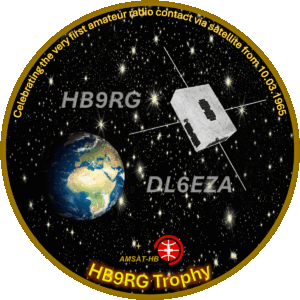
[ANS thanks AMSAT-HB for the above information]
AMSAT Remove Before Flight Key Tags Now Available
Yes, These are the Real Thing!
Your $20 Donation Goes to Help Fly a Fox-Plus Satellite
Includes First Class Postage (Sorry – U.S. Addresses Only)
Order Today at https://www.amsat.org/product/amsat-remove-before-flight-keychain
Current Active AMSAT Engineering Projects
AMSAT’s GOLF project is targeting a launch NET (no earlier than) 1Q 2026 for GOLF-TEE, a 3U CubeSat carrying a V/u linear transponder, an X band SDR based downlink, and an active attitude determination and control system. The follow-on GOLF-1 is currently targeted for a launch NET 1Q 2027.
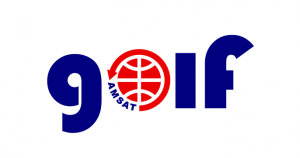
AMSAT’s Fox Plus project is also proceeding towards being ready for a launch of a 1U CubeSat (Fox-Plus-A) with a V/u linear transponder. AMSAT’s Fox-Plus-B is also proceeding with the AMSAT XBT as the core transponder technology. AMSAT’s XBT is intended to break down the barrier between linear and FM transponders using modern signal processing and SDR. It will be capable of providing simultaneous multiple channel operation using multiple modes. All” modes will be simultaneously supported from CW through SSB through narrow band FM through PSK31 (BPSK, QPSK and such) and even SSTV. The signal processing portion of the transponder will be reconfigurable in orbit and the initial design is as a traditional U/v (non-inverting) configuration.
AMSAT’s Fox-Plus-B satellite is also expected to fly AMSAT’s PACSAT payload.
Volunteers are always needed to help bring AMSAT’s Engineering projects to fruition, for more information on how to volunteer, visit https://www.amsat.org/volunteer-for-amsat/
[ANS thanks AMSAT Engineering for the above information]
The 2025 AMSAT President’s Club Coins Have Just Arrived!
Celebrating the 40th Anniversary of Amateur Radio on Human Spaceflight
Help Support GOLF and Fox Plus.
Join the AMSAT President’s Club today!
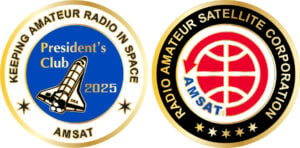
Changes to AMSAT TLE Distribution for February 14, 2025
Two Line Elements or TLEs, often referred to as Keplerian elements or keps in the amateur community, are the inputs to the SGP4 standard mathematical model of spacecraft orbits used by most amateur tracking programs. Weekly updates are completely adequate for most amateur satellites. TLE bulletin files are updated daily in the first hour of the UTC day. New bulletin files will be posted immediately after reliable elements become available for new amateur satellites. More information may be found at https://www.amsat.org/keplerian-elements-resources/.
This week there are no additions or deletions to the AMSAT TLE distribution.
[ANS thanks Joe Fitzgerald, KM1P, AMSAT Orbital Elements Manager for the above information]
Need new satellite antennas?
Purchase an M2 LEO-Pack from the AMSAT Store!
When you purchase through AMSAT, a portion of the proceeds goes towards Keeping Amateur Radio in Space.

ARISS News
Amateurs and others around the world may listen in on contacts between amateurs operating in schools and allowing students to interact with astronauts and cosmonauts aboard the International Space Station. The downlink frequency on which to listen is 145.800 MHz worldwide.
Scheduled Contacts
Woodward Mill Elementary School, Lawrenceville, Georgia, direct via K4RGK
The ISS callsign is presently scheduled to be NA1SS
The scheduled crewmember is Don Pettit KD5MDT
The ARISS mentor is K4RGK
Contact is go: Thu 2025-02-20 16:37:28 UTC 47 deg
Watch for Livestream at https://www.youtube.com/live/NfxlSEUOg6A and https://live.ariss.org/
Royal Moroccan Air Academy, Marrakech, Morocco, direct via CN8ERA
The ISS callsign is presently scheduled to be OR4ISS
The scheduled crewmember is Don Pettit KD5MDT
The ARISS mentor is IN3GHZ
Contact is go for: Fri 2025-02-21 11:12:20 UTC 72 deg
Many times a school may make a last minute decision to do a Livestream or run into a last minute glitch requiring a change of the URL but we at ARISS may not get the URL in time for publication. You can always check https://live.ariss.org/ to see if a school is Livestreaming.
As always, if there is an EVA, a docking, or an undocking; the ARISS radios are turned off as part of the safety protocol.
The crossband repeater continues to be active (145.990 MHz up {PL 67} & 437.800 MHz down), If any crewmember is so inclined, all they have to do is pick up the microphone, raise the volume up, and talk on the crossband repeater. So give a listen, you just never know.
Note, all times are approximate. It is recommended that you do your own orbital prediction or start listening about 10 minutes before the listed time.
The latest information on the operation mode can be found at https://www.ariss.org/current-status-of-iss-stations.html
The latest list of frequencies in use can be found at https://www.ariss.org/contact-the-iss.html
[ANS thanks Charlie Sufana, AJ9N, one of the ARISS operation team mentors for the above information]
Upcoming Satellite Operations
A growing number of satellite rovers are currently engaged in sharing their grid square activations on https://hams.at. By visiting the website, you gain easy access to comprehensive information about the operators responsible for activating specific grid squares. Additionally, you have the ability to assess the match score between yourself and a particular rover for a given pass, while also being able to identify the upcoming satellite passes that are accessible from your location.
No current operations listed.
[ANS thanks Ian Parsons, K5ZM, AMSAT Rover Page Manager, for the above information]
Want to fly the colors on your own grid expedition?
Get an AMSAT car flag and other neat stuff from our Zazzle store!
25% of the purchase price of each product goes towards Keeping Amateur Radio in Space
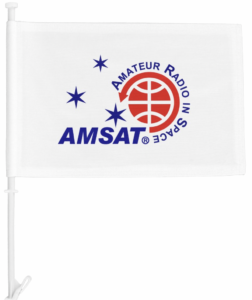
AMSAT Ambassador Activities
AMSAT Ambassadors provide presentations, demonstrate communicating through amateur satellites, and host information tables at club meetings, hamfests, conventions, maker faires, and other events.
AMSAT Ambassador Clint Bradford, K6LCS, says,
“Think a 75-minute presentation on “working the easy satellites” would be appropriate for your club or event? Let me know by emailing me at k6lcsclint (at) gmail (dot) com or calling me at 909-999-SATS (7287)!”
Clint has NEVER given the exact same show twice: EACH of the 150+ presentations so far has been customized/tailored to their audiences.
Scheduled Events
March 2, 2025
Midwinter Madness Hamfest
Buffalo Civic Center
1306 County Rd 134
Buffalo MN 55313
https://k0ltc.org/midwinter-madness/
KØJM, ADØHJ, KEØPBR
April 4 – 5, 2025
Southeastern VHF Conference 2025
Quality Inn
3095 Wilma Rudolph Blvd
Clarksville, TN 37040
W4FCL
terested in becoming an AMSAT Ambassador? AMSAT Ambassadors provide presentations, demonstrate communicating through amateur satellites, and host information tables at club meetings, hamfests, conventions, maker faires, and other events.
For more information go to: https://www.amsat.org/ambassador/
[ANS thanks Bo Lowrey, W4FCL, Director – AMSAT Ambassador Program, for the above information]
Satellite Shorts from All Over
+ The RF Board for the AMSAT-UK FUNcube Lite payload on Jovian-1 is now assembled and ready for testing. This has the 435.090 UHF FM receiver, the VHF BPSK modulator for telemetry, + the repeater logic and timer. Back of PCB has CTCSS decoder and 8 channel ADC. (Thanks to David Bowman, G0MRF, via X)
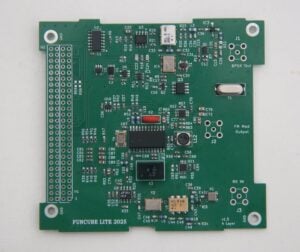
+ The AMSAT-X Meetup Net on DMR BrandMeister Talkgroup #98006, YSF Reflector #11689, and D-STAR Reflector REFSAT takes place weekly on Thursdays at 0300Z (Wednesday evening in North America).
+ With AO-73 back in full time transponder mode, a reminder that the 73 on 73 Award is still available digitally for working 73 unique stations on AO-73. Details at https://amsat-uk.org/funcube/73-on-73-award/
Join AMSAT today at https://launch.amsat.org/
In addition to regular membership, AMSAT offers membership to:
- Societies (a recognized group, clubs or organization).
- Primary and secondary school students are eligible for membership at one-half the standard yearly rate.
- Post-secondary school students enrolled in at least half time status shall be eligible for the student rate for a maximum of 6 post-secondary years in this status.
- Memberships are available for annual and lifetime terms.
Contact info [at] amsat.org for additional membership information.
73 and remember to help Keep Amateur Radio in Space!
This week’s ANS Editor,
Paul Stoetzer, N8HM
n8hm [at] arrl.net
ANS is a service of AMSAT, the Radio Amateur Satellite Corporation, 712 H Street NE, Suite 1653, Washington, DC 20002

